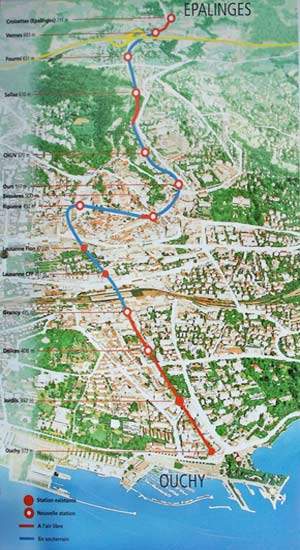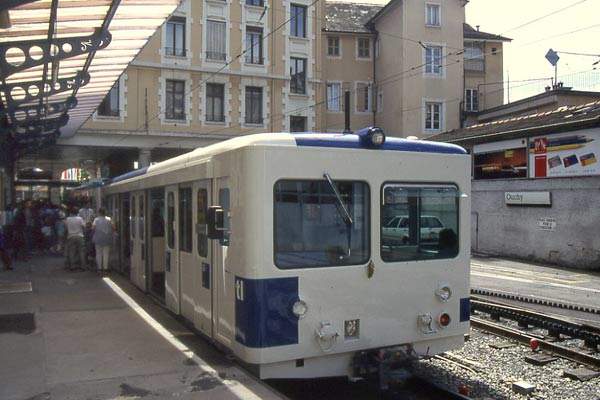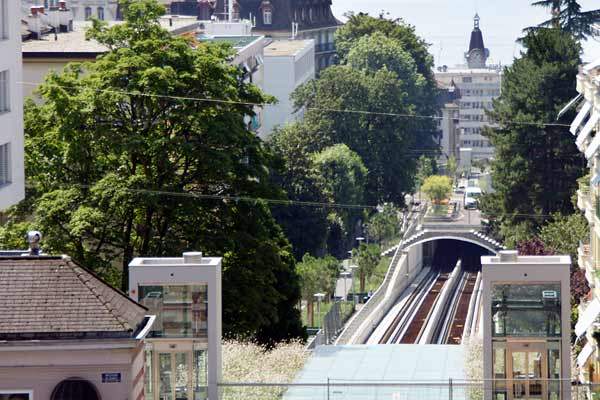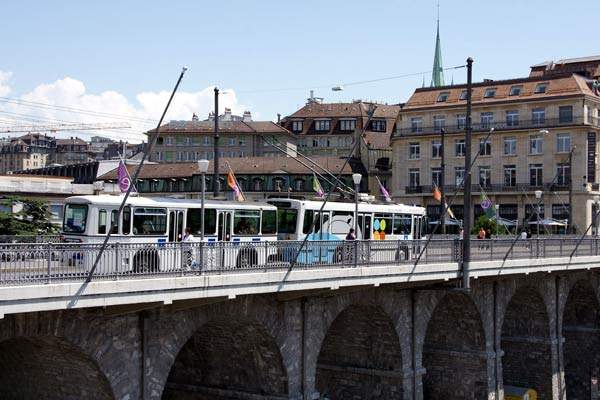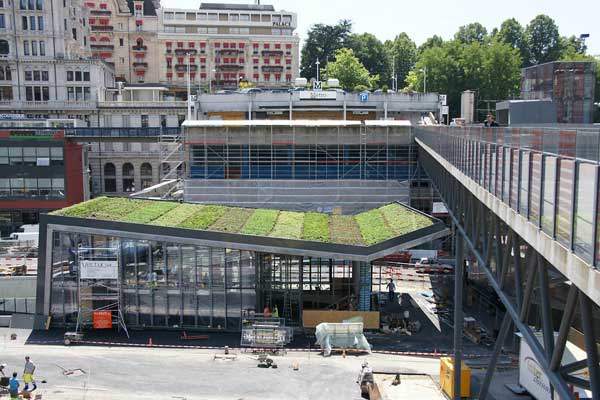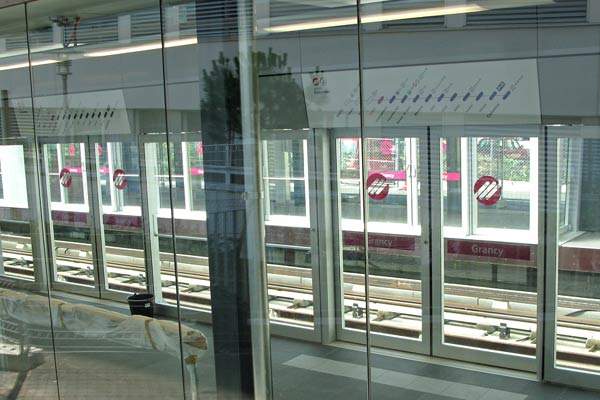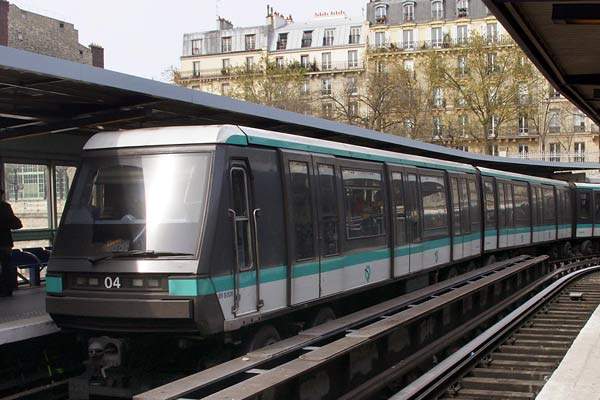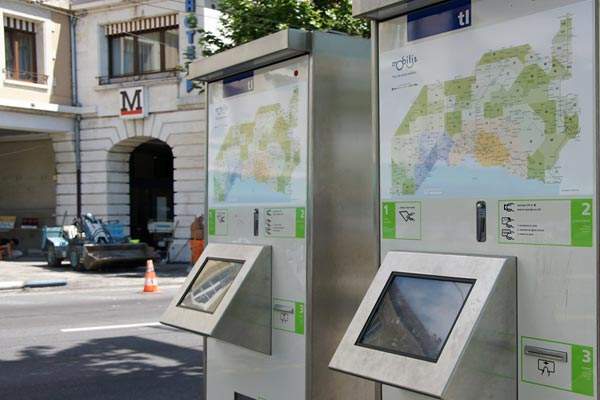Lausanne is a small city which rests in the Vaud canton of Switzerland. It has previously been identified as the world’s smallest city with a metro system – a claim gaining more substance with a project opened in late 2008.
Located on the northern shore of Lac Léman (Lake Geneva), Lausanne is famed as home to the Olympic organisation and for its high quality of life. Although creating views that attract visitors, the steep hills and zig-zag roads mean that urban journeys involve much energy use, whether for walkers or motorised transport. Public transport is mainly provided by buses and a large trolley-bus network. The SBB-CFF-FFS main line crosses the dominant slope east-west well above the lake shore, with the city extending much higher and further inland.
The project
A variously funicular or rack line from Ouchy on the lakefront (for connections with shipping services) to Flon in the city centre via the SBB station had been in operation for over a century. In spite of updates, the system was approaching another renewal cycle and, in spite of handling the gradients up to 12% over a 100m vertical difference, it was limited in scope by a length of less than 1.5km. In 1997, operator Metro Lausanne-Ouchy sought industry response for a solution to address these factors and to create a wider range of public transport interchanges to discourage car use.
Following federal concerns over the project cost (later put at SF706m), in the widely used Swiss manner, the final go-ahead for the line was subject to a local referendum. By 2003, contracts had been signed with Alstom that included the rolling stock, power supply, signalling, track and project management. As well as operating with services with greater precision, the choice of a driverless automatic system offers long-term cost advantages by being able to operate with a relatively small workforce: Alstom projected that only 70 trained staff would be needed to operate m2. Construction began in 2003, but was delayed by tunnelling problems.
Infrastructure
Closed in 2006 and subsequently dismantled, the Ouchy-Flon rack line’s alignment was reworked to accommodate the automatic system that was to also extend northwards over a new 4.5km section through northern suburbs to Les Croisettes. To maintain the service identity on the north-south axis of the previous and future line during construction, the limited stop ‘Métrobus’ was instituted between Ouchy, the SBB station and Flon.
But for a short single-track section beneath the SBB station, m2 is two-track throughout with several crossovers. The 14 stations feature 30-metre platforms with access to the six train-side doors through automatically activated platform edge screen doors. Of the total route length, about 90% of the track is below ground. Retaining some of the original 12% gradients, Lausanne m2 remains the world’s steepest metro.
Stations are located on or near to the surface, making use of the sloping ground for varied access points with widespread use of lifts and ramps. The SBB station is mainly served by the designated Lausanne CFF stop, with the southern platforms also close to Grancy, replacing the former Montriond stop and re-sited for rail interchanges as well to serve the surrounding residential area. The other key meeting point is Lausanne Flon, just north of the former terminus of the previous Ouchy
line.
A new station provides connections between the 7.8km metro line m1 (formerly Métro-Ouest) – a more conventional light rail operation – and the Lausanne-Echallens-Bercher (LEB) metre-gauge local rail service. Containing 2km of track, the m2 line’s single depot is near the Vennes stop towards the north of the system.
Rolling stock
The bi-directional stock is based upon the Alstom type MP89 as used in driverless six-car formations on Paris Métro’s automatic Line 14 and in driven format on Line 1. The initial m2 fleet is 15 two-car units with wide gangways, each giving space for 222 passengers (60 seated) with all four bogies powered. Maximum speed is 60km/h (38mph), with the entire route which has a 338m vertical difference between termini being covered in 18 minutes.
Flanged steel wheels assist guidance and provide emergency support in the event of failure of the rubber tyres, which run on a metal beam. A lateral guide on the track formation is contacted by horizontally mounted tyres. The vertical tyres give the adhesion required for the severe gradients and allow for rapid acceleration and braking. Alstom is responsible for the maintenance of stock for five years.
Signalling and communications
Line m2 uses the Alstom Urbalis 300 automatic signalling system similar to that deployed on the Singapore metro. Like the signalling, the information and security systems are centred on the Vennes depot. As a largely unstaffed operation, great reliance is placed upon surveillance of trains and stops, with two-way communication available between passengers and control. With a peak frequency of three minutes, m2 weekday operations are 05.50–00.00.
The Vaud canton has a Mobilis-branded common fare structure within which m2 is incorporated, part of a 860km network that includes SBB, LEB and the Transports publics de la région Lausannoise (TL) system.
The future
The system has been in test operation and some stations opened for visits as part of the promotion and public relations for the line. Lausanne m2 opened in normal service on 27 October 2008. The ‘inland’ Les Croisette terminus allows for further northwards extension.

